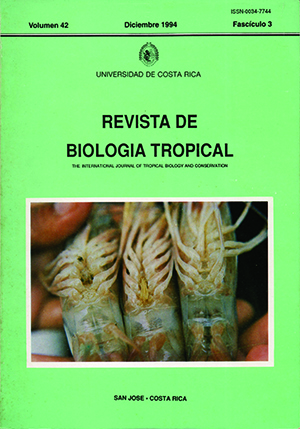Abstract
A quantitative analysis of several onychophoran characteristics shows that in habitats with lower rain levels females reproduce at an older age, are more fecund and tend to have reproductive diapause where rain does not exceed a mean of 2 00 cmlyear.These habitat characteristics are associated with the southem family Peripatopsidae. Sex ratio and parental investment per young are not correlated with general environmental conditions. A comparison of 72 species showed that larger species are often more variable in morphóliletry, but species with the longest females do not always have the longest males. Larger Peripatus acacioi females (peripatidae: Brazil) produce more and heavier offsprlng. Intrapopulation morphology was studied iti 12 peripatid species for which samples of between 11 and 798 .individuals were available. In general, within populations the íemales are more variable than males in length and weight, but similarly variable in the number of legs. The number of legs has a low variability (1. 73-2.45%), length is intermediate ( 22. 4-25. 3%) and weight is very variable ( 49. 41-75 . 17%). When sexes are compared within a population, females canhave 1. 4-8. 9 % more leg pairs, and be 47-63 % heavier,and 26 % lóngerthan males.##plugins.facebook.comentarios##

This work is licensed under a Creative Commons Attribution 4.0 International License.
Copyright (c) 1994 Revista de Biología Tropical
Downloads
Download data is not yet available.


